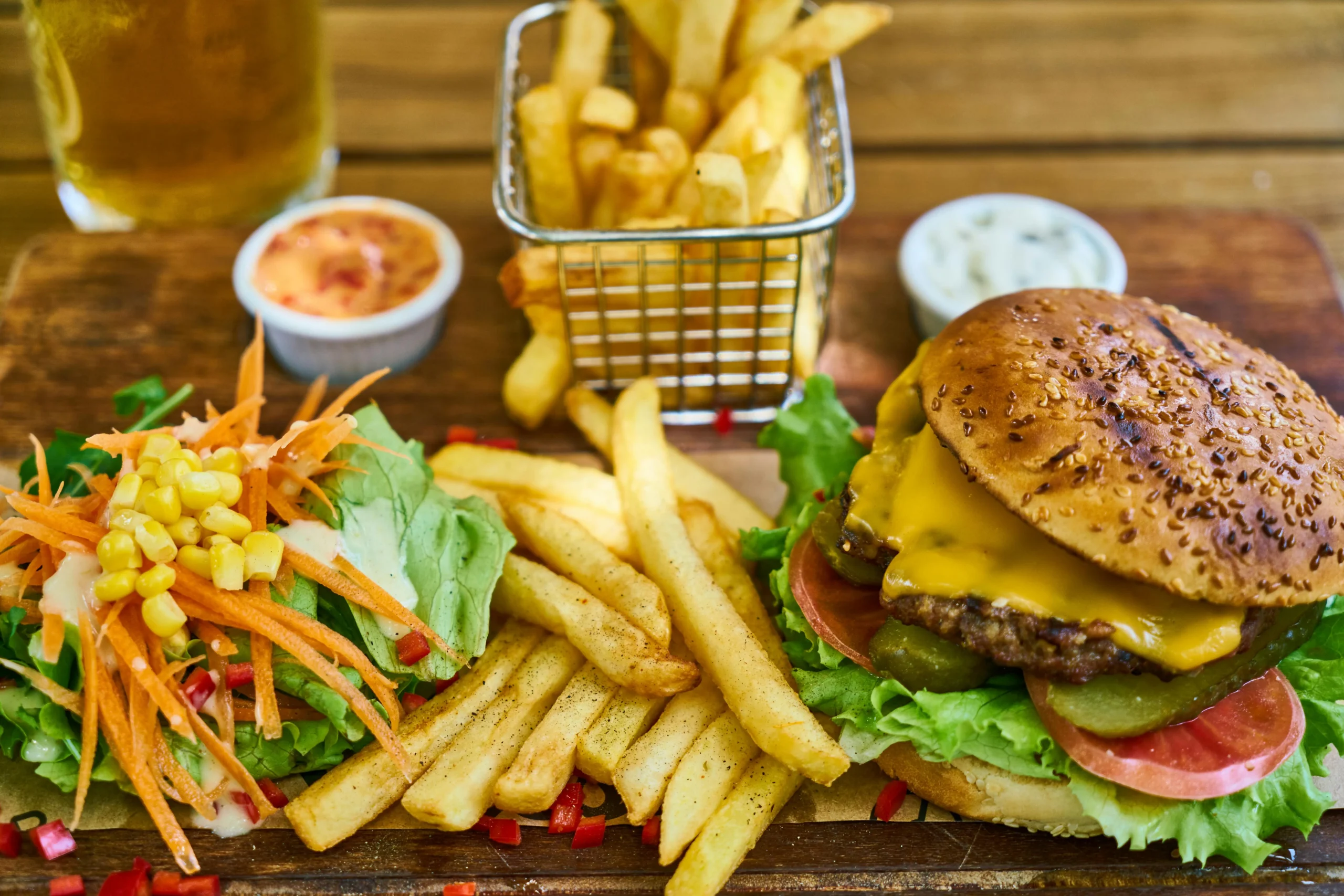Understanding Fatty Food Intolerance. Fatty meal intolerance emerges as a commonplace digestive project, especially publish-gallbladder elimination. With the gallbladder out of the digestive equation, the method of fat digestion undergoes a significant shift.
The gallbladder, as soon accountable for storing bile—a critical fluid helping fat breakdown—is not a gift. Consequently, bile is launched at once into the intestines, disrupting the law of fat digestion. This imbalance results in problems in correctly breaking down and absorbing fat, manifesting signs and symptoms like bloating, fuel, belly cramps, and diarrhea after consuming meals rich in fat.

Individuals navigating lifestyles after gallbladder removal ought to be aware of nutritional alternatives to alleviate signs and symptoms of fatty meal intolerance. The absence of this organ necessitates a slow adjustment, prompting the digestive gadget to evolve to a new normal in fat metabolism. During this transition, incorporating digestible, low-fat ingredients and more minor, more frequent meals can ease the load on the digestive machine, selling common well-being.
Symptoms of Fatty Food Intolerance :

Persistent Bloating:
Fatty meal intolerance can provide an upward push to continual bloating, an uncomfortable sensation marked via a sense of fullness and tightness inside the abdominal region. Individuals also say that their stomach appears distended, contributing to a widespread feeling of soreness.
Excessive Gas:
The challenges faced by the digestive system in breaking down fat without the aid of the gallbladder regularly cause an extra amount of gas manufacturing. This can show up as elevated flatulence, inflicting pain, and sometimes social unease.
Stomach Cramps:
Fatty meal intolerance usually causes stomach cramps characterized by sharp or stupid aches within the stomach region. These cramps may occur rapidly after eating meals with a better fat content.
Diarrhea:
One of the hallmark signs and symptoms of fatty food intolerance is diarrhea. The inefficiency in breaking down and assimilating fats can result in free, watery stools and an expanded frequency of bowel movements.
Discomfort, Urgency, and Irregular Bowel Movements:
Beyond the precise symptoms cited, people might also experience a typical experience of pain, a heightened urgency in bowel movements, and irregularities in their digestive routine. This may additionally include unpredictable patterns inside the timing and consistency of stools.
Recognizing and interpreting these nuanced signs is pivotal for powerful management. Seeking guidance from healthcare professionals ensures a comprehensive technique, including customized techniques to alleviate symptoms and make tailor-made nutritional modifications.
Health Impact of Greasy Food Intolerance :
Greasy food intolerance shares commonalities with fatty food intolerance, regularly inflicting soreness and digestive disturbances. The absence of the gallbladder once more performs a pivotal position in these demanding situations, impacting the green breakdown of greasy and oily meals. Symptoms may reflect the ones of fatty food intolerance, underscoring the want for a tailored approach to nutritional selections.

The fitness effect of greasy meal intolerance extends beyond instantaneous digestive discomfort. Prolonged exposure to fatty foods that the frame struggles to digest can result in dietary deficiencies and contribute to weight management challenges. It is vital for people experiencing fatty meal intolerance to adopt an eating regimen rich in lean proteins, whole grains, and greens to minimize digestive discomfort and sell everyday fitness.
Managing Fatty Food Intolerance :

Strategic Meal Planning:
To correctly manage fatty meal intolerance, undertake a meal approach focused on more miniature, more frequent food at some stage. This technique eases the load on the digestive machine, facilitating better fat absorption and minimizing discomfort.
Mindful Fat Selection:
Opt for lean protein sources and include more healthy fat in your weight loss program. Choose foods rich in omega-3 fatty acids, including fish and flaxseeds, to promote average cardiovascular health while minimizing the impact of fat intolerance.
Avoiding Culprits:
Steer clear of excessively greasy or fried foods, as those can exacerbate symptoms of fatty meal intolerance. Instead, explore opportunity cooking techniques like baking, grilling, or steaming to keep the taste without compromising digestive well-being.
Hydration as a Priority:
Prioritize adequate hydration to support the digestive process. Water consumption is vital in preventing complications related to fat malabsorption and retaining average digestive health. Aim for at least 8 glasses of water consistent with the day.
Nutritional Balance:
It is essential to pay attention to your nutritional intake. Ensure your diet is well-balanced with plenty of nutrients, including vitamins and minerals. This will not only aid in digestion but also contribute to overall health and well-being.
Professional Guidance:
Seek steering from healthcare experts to expand a customized control plan. These experts can determine individual tolerance levels, suggest suitable dietary adjustments, and provide help for lengthy-term digestive health.
Food Journaling:
Maintain a detailed food magazine to music your dietary alternatives and associated signs. This can help perceive unique triggers, considering focused changes and a more excellent practical control approach.
Supplementation Considerations:
Discuss the ability to use supplements with your healthcare issuer. Specific vitamins and minerals, including fat-soluble nutrients (A, D, E, K), may also require supplementation to address deficiencies attributable to fat malabsorption.
Mindful Eating Practices:
Adopt aware ingesting conduct to beautify digestion. Chew food thoroughly, devour slowly, and be attuned to your body’s alerts. This is no longer the most effective aid in fat absorption but prevents overeating, decreasing the likelihood of soreness.
Embracing a Holistic Approach:
Recognize that handling fatty food intolerance entails a holistic technique encompassing eating regimen, hydration, lifestyle, and expert guidance. Embrace a complete approach to selling standard digestive well-being and beautifying a pleasant existence for individuals in this situation.
Conclusion

In the end, robust control of fatty meal intolerance requires a considerate and multifaceted technique that extends past mere dietary changes. People can appreciably alleviate symptoms by strategically planning smaller, more frequent meals, making conscious selections of fat and proteins, and fending off intricate foods. Prioritizing hydration and maintaining a properly balanced dietary intake are foundational to helping the digestive procedure and mitigating headaches related to fat malabsorption.
Looking for steerage from healthcare specialists is paramount. Their understanding leads to the development of customized control plans that bear in mind personal tolerance levels and promote typical digestive health. While essential, Incorporating lifestyle practices, including food journaling, aware ingesting, and supplementation, complements the efficacy of the management method.
Managing fatty food intolerance isn’t always restricted; it’s about embracing a holistic method. By adopting a comprehensive method encompassing numerous aspects of lifestyles, individuals can enhance their normal proper-being and reduce the impact of this situation. By adopting these measures, individuals can regain control of their digestive health and transform their lifestyles for the better.
Please share your thoughts in comment, at prolife360 we are open to friendly suggestions and helpful inputs to keep awareness at peak.

